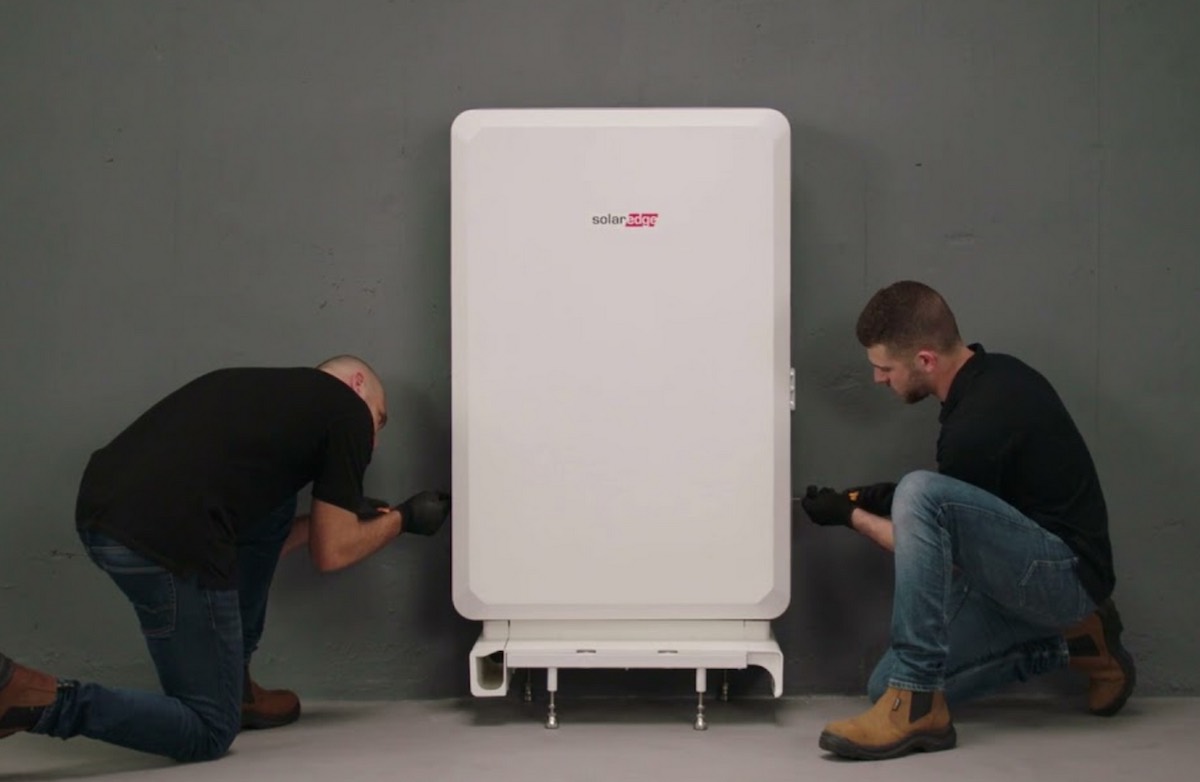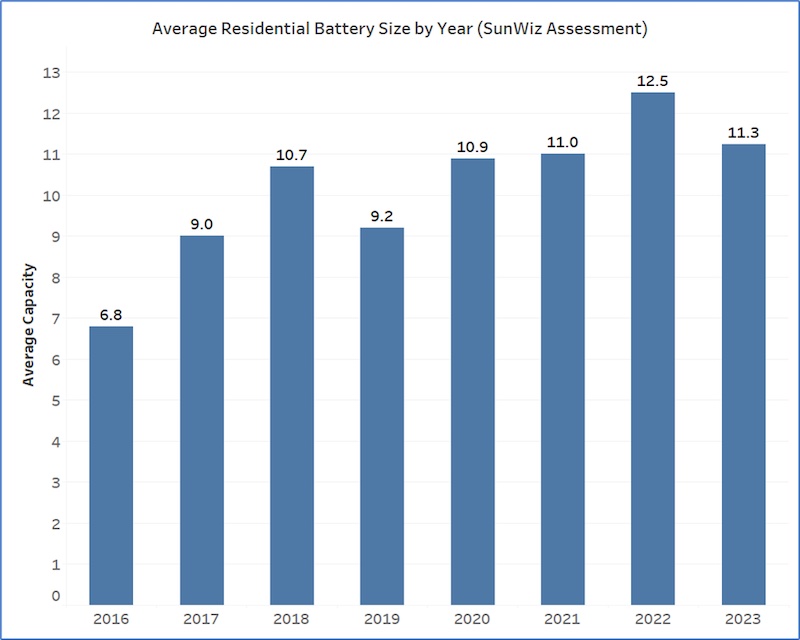

Image: Solar Edge
New data this week has revealed that Australians installed 57,000 home batteries in 2023, a fifth more than in 2022 thanks to a growing desire for energy independence and power bill control.
But the data from the latest annual Australian Battery Market Report from analysts SunWiz turned up another interesting trend for 2023: smaller battery sizes.
According to Sunwiz, the average home battery system installed in 2023 had a capacity of 11.3kWh, compared with 12.5kWh in 2022. And as you can see in the chart below, system sizes have ebbed and flowed over the years.


“Energy storage system sizes have not steadily increased in the same way PV system sizes did,” says Sunwiz managing director Warwick Johnston.
“The often-presented chart of PV sizes shows a steady march of 1.5kW making way for 2kW then 3kW, 5kW, and 6.6kW. That march is now moving to 10-13kW systems.”
So why are average battery system sizes so up and down?
Johnston says this partly comes down to “continual experimentation” by manufacturers and retailers, who are still trying to get a handle of customer preferences, which themselves are rapidly evolving.
“Another driver is brand-specific: brand availability can be a factor, as can relative pricing, and changing consumer brand preferences,” he says.
Another factor is the variable relative fortunes of battery market segments, including different states and retrofit rates.
“The rising rate of battery retrofit to pre-existing, unchanged PV would have predicted an increase in average battery size, but for the emergence of 5kWh retrofit batteries,” Johnston says.
“At the other end of the spectrum, we’re seeing a growing number of 20+kWh installations, particularly when installed concurrently with PV.”
As the second chart shows, 6-8kWh and 10-15kWh segments both dominated the market in 2023, making up roughly one-third each of installation numbers.
Notably, the 10-15kWh segment would include the Tesla Powerwall, which comes in one size only at 13.5kWh.
Other popular brands, like sonnen, offer a range of sizes via modular battery systems. The sonnen hybrid has two options, the first ranging from 2.5-5kWh and the second ranging from 5-15kWh.
More information on ESS system size trends and segments is contained in the 2024 SunWiz Annual Battery Market Report. See https://www.sunwiz.com.au/
Sophie is editor of One Step Off The Grid and deputy editor of its sister site, Renew Economy. Sophie has been writing about clean energy for more than a decade.
This post was published on April 12, 2024 1:16 pm
Iconic Australian hardware and garden store says it has reached 100 per cent renewables, with…
Data used to showcase the downward impact of renewable energy on power prices contained a…
Most so-called ‘community batteries’ are actually installed by electricity networks, but this local group managed…
Rising energy bills are driving a surge in complaints. The NSW Energy Ombudsman wants better…
Australians are often being misled when they try to make sustainable electrical appliance choices, and…
China EV giant bows to trend of offering "complete solutions" for home energy, with launch…